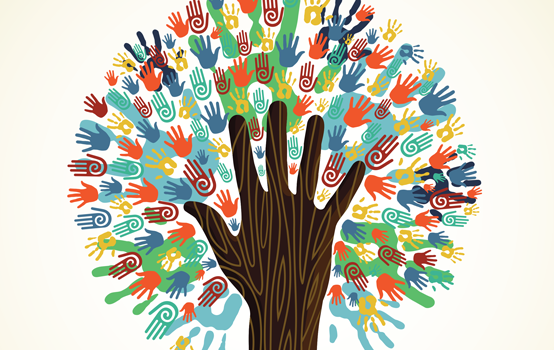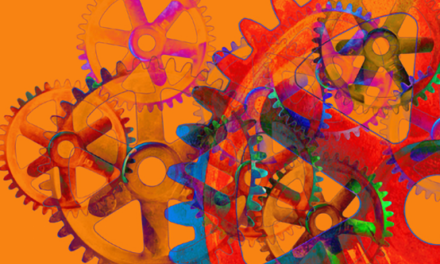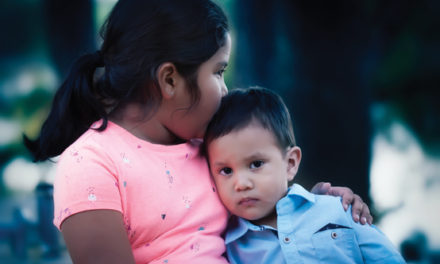Insights from research help educators navigate the deluge of information about school-based social-emotional learning.
Educators want to help students develop the social and emotional skills that will enable them to manage challenges. Interest in social-emotional learning (SEL) was growing before COVID-19, but with the pandemic came levels of stress that exceed the current social-emotional supports schools typically provide. As a result, student distress and difficultly engaging in school are on the rise (Viner et al., 2022).
In a 2021 survey, 84% of educators said that SEL has become more important since the pandemic (Hanover Research, 2021). Just over half (56%) of those educators said their schools were planning to implement an SEL program in the 2021-22 school year. This is occurring alongside an influx of federal Elementary and Secondary School Emergency Relief funding to support SEL. A Google search of “SEL” generated 4 million hits in 2019, and that number grew to 774 million in early 2023.
How can educators navigate this deluge of information about SEL? As recent executive committee members of the American Educational Research Association SEL Special Interest Group, with decades of experience as teachers, developers, and researchers of SEL, we offer clarity on five questions we are commonly asked about SEL.
What is SEL?
Universal school-based social and emotional learning (SEL) refers to school programs that promote the development of personal social and emotional competencies that support the psychological health of all students (Cipriano et al., 2023). Emotional competence refers to two broad skills: 1) the ability to understand, express, and regulate one’s own emotions, and 2) the ability to understand others’ emotions. Social competence refers to the ability to interact prosocially and effectively with others. Prosocial behaviors benefit others and promote harmonious relationships, in contrast to antisocial behaviors that harm others and disrupt social groups (Bergin, 2018).
Social and emotional competencies are interrelated. For example, the ability to understand your own and others’ emotions allows you to respond to others with empathy and interact in ways that build positive relationships. In turn, positive relationships with others promote happiness and emotional health. Social cognition combines both social and emotional competencies to include skills in emotional intelligence, perspective-taking, moral judgment, social problem solving, and conflict resolution.
Universal school-based SEL programs support the development of social and emotional competencies across the school community, which may include school leaders, educators, students, and students’ families. Increasingly, they focus explicitly on how emotional competence, social competence, and social cognition can enhance a school’s ability to be a welcoming, affirming, fair, and inclusive environment for students of diverse identities (Cipriano et al., 2023).

Why is SEL Important?
Social-emotional (SE) competence is malleable, meaning educators can make a difference in their students’ competencies through direct and indirect instructional practices and programming (Domitrovich et al., 2017). Indeed, some contend that teachers may have a greater impact on their students’ SE competencies than on their academic achievement (Jennings & DiPrete, 2010). Although there are too many nuances within SEL’s effects to fully review in this article, there is robust evidence that growth in SE competencies benefit students, teachers, and communities.
Students’ well-being and achievement
Students with strong social-emotional skills experience a broader range of emotions and are better able to harness their emotions in healthy ways. Students with prosocial skills have healthier relationships with others, including their classmates and teachers (Wentzel, 2013). These healthy relationships have their own cascading benefits, resulting in a positive school climate.
In addition, students with strong SE skills are more engaged in class and learn more. At all grade levels, from prekindergarten through high school, prosocial students have higher grades and test scores (Bergin, 2018). Studies show that SEL programs that increase students’ prosocial behavior also raise their test scores, even when the SEL program does not have an academic component (Cipriano et al., 2023; Wang et al., 2020). Similarly, students with better emotional competence — the ability to regulate their own emotions and read others’ emotions — earn higher grades and test scores (MacCann et al., 2020). Students with strong SE skills are also less likely to be retained a grade (Shankland & Rosset, 2017). Thus, schools that aspire to increase student learning cannot overlook student SE skill development.
Students’ success beyond school
The World Economic Forum (2020) has noted that employers need workers with greater SE skills, including the ability to collaborate, listen actively, manage conflict, respect others, manage their emotions, and so on. Yet, top managers believe that just 30% to 40% percent of new hires have enough of these skills (Brackett & Cipriano, 2020), putting students with these skills at an advantage when it comes to gaining and retaining jobs.
Students who participate in effective SEL programs also are more likely to have other long-term positive outcomes, such as increased graduation rates; overall better mental health; and reduced likelihood of sexually transmitted diseases, unemployment, arrests, and drug use in adulthood (Cipriano et al., 2023; Taylor et al., 2017). This makes universal school-based SEL an economically practical investment in students’ futures.
Educators’ well-being
Educators with stronger SE competence can build more positive relationships with students, including students whose identities are different from their own (Warren, Presberry, & Louis, 2022). These positive relationships, in turn, increase students’ prosocial behavior, academic engagement, and learning and reduce the need to discipline students. They also buffer educators from burnout (Schonert-Reichl, 2019).
Thus, schoolwide SEL programs should include professional development that builds educators’ own SE competences and their confidence that they can contribute to their students’ SE competencies. In addition, leadership development and teacher preparation programs should include SEL coursework that covers how teachers can grow their own SE competencies and promote their growth among students (Mahfouz & Gordon, 2021; Nenonene et al., 2019).
Community climate
SEL interventions that result in an improved social climate of the classroom may more strongly predict students’ grade-point averages than teachers’ instructional practices (Griffith, 2002). The positive relationship between classroom climate and student achievement levels appears across economic stratifications, with burgeoning evidence suggesting added value for minoritized students and students in low-income households (Berkowitz et al., 2017). Furthermore, the just and equitable society Americans strive for requires a classroom climate where all students feel a positive sense of identity and are able to engage productively with others of different identities (Camacho et al., 2017; Loyd & Williams, 2016).
SEL interventions also support healthy communities beyond the school walls (Jagers et al., 2021) by developing in students the SE competencies that enable them to be good citizens and neighbors who can listen to people with different ideas, take others’ perspectives, compromise, and hold each other accountable for making responsible decisions. Ultimately, these SE skills help our society thrive.
How does SEL complement what we already do in schools?
Universal school-based SEL programs complement, but should not replace, important initiatives already in place. These include mental and behavioral health services, bullying prevention, behavior management programs, trauma-informed education, and equity initiatives.
Mental and behavioral health services
SEL programs focus on growing competencies of all students, while mental health services primarily focus on identifying students with social, emotional, or behavioral problems and providing support to reduce their symptoms and build their strengths.
Both SEL and mental health programs can work in tandem as part of a comprehensive tiered system of social support services (see Figure 1). Tier 1 is made up of universal SEL programs that support all students and are generally delivered in the classroom by a teacher or counselor. In Tier 2, targeted SE interventions, including mental health services, are offered to a subset of around 5-15% of students. Counselors or special education teachers often deliver these interventions in small groups. Tier 3 interventions are more individualized and intensive and designed for the 1-5% of students who need more support than is available at Tier 1 or 2. They are typically delivered by a multidisciplinary team whose members provide a variety of wraparound services.

Although mental health interventions tend to come into play more at the higher tiers, effective Tier 1 SEL programs create a more positive, inclusive, and socially safe environment that is valuable to students who receive Tier 2 and 3 support. For example, there is some evidence that universal school-based SEL may help reduce youth suicide (Posamentier, Seibel, & DyTang, 2022) and support the success of Tier 2 interventions for students with antisocial behavior (August et al., 2001). However, more research is needed (Cipriano et al., 2023).
Bullying prevention
Anti-bullying programs may be situated at any of the three tiers, depending on school needs. Specifically, bullying prevention interventions overlap with universal school-based SEL if they focus on promoting social-emotional competencies and create an inclusive, positive school climate that disrupts indignities based on disability, religion, gender, race, or other characteristics. Generally, however, anti-bullying programs on their own are not considered fully comprehensive SEL programs (Cipriano et al., 2023).
Behavior management programs
Behavior management programs have historically been provided at Tier 3, as part of the special education services a student might receive. The emphasis is on giving students material rewards, such as points, tickets, and prizes for compliant behavior. Individual students in need of Tier 3 supports may benefit from such programs. However, some behavior management programs are touted as being appropriate ways to offer universal Tier 1 SEL and are now being applied to an entire student body. This is controversial because historically these programs largely focused on controlling or replacing unhealthy student behaviors without a focus on thoughts or emotions.
Programs that focus on external control of behavior may traumatize students, undermine their dignity, increase rebellion, and reduce prosocial behavior (Donald et al., 2021). They may stunt students’ opportunity to develop self-control and teach them to behave for self-serving motives, creating ego-involved peer cultures (Bergin, 2018; Cheon, Reeve, & Ntoumanis, 2019). In contrast, effective universal SEL programs preserve students’ dignity as they provide students with skills to understand and manage their thoughts, feelings, and behavior themselves and develop healthy relationships and self-esteem.
Trauma-informed practice
Traumatic-informed practice includes identifying/assessing traumatic stress, addressing/treating it, and raising awareness of it (Donisch et al., 2022). It can result from a single incident (e.g., a tornado or car accident) or be complex and chronic (e.g., abuse, parental incarceration, or racism).
The just and equitable society Americans strive for requires a classroom climate where all students feel a positive sense of identity and are able to engage productively with others of different identities.
Studies show that SEL programs that increase students’ prosocial behavior also raise their test scores, even when the SEL program does not have an academic component.
From our perspective, SEL programs may contribute to trauma-informed practice in at least three ways. First, they build educators’ empathy toward students by raising their awareness of the traumas some students experience. Teachers who are unaware of the dynamics of complex trauma can easily mistake its manifestations as willful disobedience, defiance, or inattention, leading them to respond to it as though it were mere misbehavior (Terrasi & de Galarce, 2017). Second, they promote a positive school climate, which creates a safe space for students who have experienced trauma (Pawlo et al., 2019). Third, such programs increases students’ capacity to cope with trauma through strengthening foundational social-emotional skills. Of course, students who’ve experienced trauma will likely benefit from additional Tier 2 or 3 interventions to help them manage the strong emotions, such as rage or despair, that can be related to trauma.
Equity
Equity — the assurance that everyone has access to the opportunities and resources they need to thrive — is foundational to a democracy, and all social institutions have a role in cultivating it. This includes schools that are helping the next generation of citizens learn the skills to create a more equitable democracy (Jagers et al., 2021). Equity begins by acknowledging the patterns of inequity many groups in the school community experience and making a commitment to address the imbalance.
SEL programs that are directly supportive of equity efforts are referred to as “transformative SEL.” This approach to SEL addresses inequities in power, privilege, discrimination, and social justice through making SEL efforts more inclusive and diverse and through teaching students the SEL skills they need to see and challenge inequities in their own communities. Such initiatives may include culturally responsive pedagogy and center youth voice (Barnes, 2019).
SEL may indirectly support equity by building the competencies needed to create healthy, equitable communities in which all members are treated with dignity (National Commission on Social, Emotional and Academic Development, 2019). By creating schools where all feel valued and promoting compassionate communities, SEL programs may contribute to eradicating injustices.
What should you consider when choosing an SEL program?
SEL programs are proliferating, and each program has different approaches, some of which may overlap and some of which may contradict each other. A meta-analysis of more than 400 SEL studies found that only half of the programs are developed from a specific theory of learning, and they vary greatly in their history, scope, and sequence (Cipriano et al., 2023). A school’s selection team, which should include representatives from all stakeholder groups, may want to consider how the program works, how it fits the community, and what evidence is available for its effectiveness.
Types of SEL programs
SEL programs may take a curricular, interactional, or structural approach, or a combination. Still others provide a menu of tools and resources for teachers to build their own SEL program.
Curricular SEL programs are standalone, fully developed instructional content offered through direct lessons on specific SE competencies. Classroom teachers, specialists, school counselors, or nurses may offer lessons daily, weekly, monthly, or on another schedule, depending on the program design and how the school decides to implement it.
Interactional SEL programs incorporate SEL into existing daily teaching practices by transforming the way educators interact with students and how they support students’ interactions with each other. The emphasis is on professional development for educators. Ideally, these programs support all staff in a school so that common norms are established, but they can be effective when implemented in a single classroom (Bergin, 2018). Although students may not receive specific lessons, they may receive more SEL support through this approach because it is infused throughout each school day.
The just and equitable society Americans strive for requires a classroom climate where all students feel a positive sense of identity and are able to engage productively with others of different identities.
Structural SEL programs inform school routines, policies, and procedures. For example, instead of calling police for student misbehavior, schools may shift to using restorative justice practices, which involve correcting harmful behavior and restoring positive relationships.
Fit with the community
No single SEL program can address all social-emotional skills. Some programs focus narrowly on a single skill (e.g., managing one’s own emotions); others have a multi-skill focus. A school district’s selection team should be clear about outcomes they prioritize. For example, if a school aims to increase student-to-student prosocial behavior, but the program’s descriptions of outcomes focus on reduced disciplinary referrals, there is misalignment.
When preparing to adopt an SEL program, selection teams should prioritize a few measurable outcomes that are meaningful to the school’s community (McKown, 2018) and select programs that address those outcomes in ways that recognize the strengths and challenges students experience in their community (Castro-Olivo et al., 2021). For example, if a school serves a lot of immigrant students, the SEL program can build on the resilience developed through that experience and emphasize the positive ethnic identity these students’ families may be working to maintain.
Finally, the team should also attend to the demands the program makes of teachers, matching capacity with demands.
Research evidence
SEL programs should be research-based — that is, built on a strong foundation of theory and research. Ideally, a program would have robust evidence of effectiveness, with at least one rigorous study supporting its effectiveness. However, research lags behind program development. Thus, many research-based programs that may be highly effective do not yet have evidence of effectiveness because they have not yet been evaluated. Such programs may be worth adopting if they resonate with a community’s needs (see Cipriano et al., 2023, for a full review of the evidence supporting a variety of SEL programs).
Where can you get information about specific SEL programs?
You can find information about the research base for specific SEL programs from their developers, and you can find emerging evidence of the programs’ effectiveness at the U.S. Department of Education’s What Works Clearinghouse (WWC). Note, however, that many potentially effective SEL programs have not yet been rigorously evaluated and therefore are not included in the WWC reviews. In addition, a few organizations summarize evidence for many SEL programs and make it freely available on their websites. These include the Wallace Foundation, the Centers for Disease Control and Prevention, and the Collaborative for Academic, Social, and Emotional Learning. You also can reach out to other schools that serve your demographic and learn from their experiences.
In summary, universal school-based SEL is a worthwhile investment for students, teachers, and your school community. With attention to the type of SEL approach, your priorities and capacity, research evidence, and community fit, you can provide high-quality SEL for your students, teachers, families, and leaders, just as you do for academic learning.
References
August, G.J., Realmuto, G.M., Hektner, J.M., & Bloomquist, M.L. (2001). An integrated components preventive intervention for aggressive elementary school children: The Early Risers program. Journal of Consulting and Clinical Psychology, 69 (4), 614-626.
Barnes, T.N. (2019). Changing the landscape of social emotional learning in urban schools: What are we currently focusing on and where do we go from here? The Urban Review, 51 (4), 599-637.
Berkowitz, R., Moore, H., Astor, R.A., & Benbenishty, R. (2017). A research synthesis of the associations between socioeconomic background, inequality, school climate, and academic achievement. Review of Educational Research, 87 (2), 425-469.
Bergin, C. (2018). Designing a prosocial classroom: Fostering collaboration in students from pre-K-12 with the curriculum you already use. Norton.
Brackett, M. & Cipriano, C. (2020). Emotional intelligence comes of age. Cerebrum, 1 (3), 28-31.
Camacho, T.C., Bañales, J., Cross, F.L., Marchand, A., & Rivas-Drake, D. (2017). Psychological aspects of ethnic/racial identity and their associations with social behavior. In A.W. Blume (Ed.), Social issues in living color: Challenges and solutions from the perspective of ethnic minority psychology (pp. 165-188). Praeger.
Castro-Olivo, S., Furrer, J., & Yoder, N. (2021), Making social and emotional learning programs relevant for Latino youth of immigration: The role of cultural adaptations, In N. Yoder & A. Skoog-Hoffman (Ed.), Motivating the SEL field forward through equity (pp. 143-158). Emerald Publishing Limited.
Cheon, S., Reeve, J., & Ntoumanis, N. (2019). An intervention to help teachers establish a prosocial peer climate in physical education. Learning and Instruction, 64.
Cipriano, C., Strambler, M.J., Naples, L., Ha, C., Kirk, M.A., Wood, M.E., . . . Durlak, J. (2023, February 2). Stage 2 report: The state of the evidence for social and emotional learning: A contemporary meta-analysis of universal school-based SEL interventions. OSF Preprints.
Domitrovich, C., Durlak, J., Staley, K.C., & Weissberg, R.P. (2017). Social-emotional competence: An essential factor for promoting positive adjustment and reducing risk in school children. Child Development, 88 (2), 408-416.
Donald, J.N., Bradshaw, E.L., Conigrave, J.H., Parker, P.D., Byatt, L.L., Noetel, M., & Ryan, R.M. (2021). Paths to the light and dark sides of human nature: A meta-analytic review of the prosocial benefits of autonomy and the antisocial costs of control. Psychological Bulletin, 147 (9), 921-946.
Donisch, K., Ake, G., Halladay Goldman, J., Trunzo, C.P., Agosti, J., & Houston, F. (2022). National Child Traumatic Stress Network’s Breakthrough Series Collaborative Schools Brief: A focus on trauma-informed practices. National Center for Child Traumatic Stress.
Griffith, J. (2002). A multilevel analysis of the relation of school learning and social environments to minority achievement in public elementary schools. Elementary School Journal, 102 (5), 349-366.
Hanover Research. (2021). 2021 social and emotional learning report. McGraw Hill.
Jagers, R.J., Skoog-Hoffman, A., Barthelus, B., & Schlund, J. (2021). Transformative social emotional learning: In pursuit of educational equity and excellence. American Educator, 45 (2), 12-17.
Jennings, J. & DiPrete, T.A. (2010). Teacher effects on social and behavioral skills in early elementary school. Sociology of Education, 83 (2), 135-159.
Loyd, A.B. & Williams, B.V. (2016). The potential for youth programs to promote African American youth’s development of ethnic and racial identity. Child Development Perspectives, 11 (1), 29-38.
MacCann, C., Jiang, Y., Brown, L.E.R., Double, K.S., Bucich, M., & Minbashian, A. (2020). Emotional intelligence predicts academic performance: A meta-analysis. Psychological Bulletin, 146 (2), 150-186.
Mahfouz, J. & Gordon, D.P. (2021). The case for focusing on school principals’ social-emotional competencies. Management in Education, 35 (4), 189-193.
McKown, C. (2018). Introduction to the special issue on social-emotional assessment to guide educational practice. Journal of Applied Developmental Psychology, 55, 1-3.
National Commission on Social, Emotional and Academic Development. (2019). A nation at hope. Aspen Institute.
Nenonene, R.L., Gallagher, C.E., Kelly, M.K., & Collopy, R.M. (2019). Challenges and opportunities of infusing social, emotional, amd cultural competencies into teacher preparation. Teacher Education Quarterly, 46 (4), 92-115.
Pawlo, E., Lorenzo, A., Eichert, B., & Elias, M. (2019). All SEL should be trauma-informed. Phi Delta Kappan, 101 (3), 37-41.
Posamentier, J., Seibel, K., & DyTang, N. (2022). Preventing youth suicide: A review of school-based practices and how social–emotional learning fits into comprehensive efforts. Trauma, Violence, and Abuse.
Schonert-Reichl, K.A. (2019). Advancements in the landscape of social and emotional learning and emerging topics on the horizon. Educational Psychologist, 54 (3), 222-232.
Shankland, R. & Rosset, E. (2017). Review of brief school-based positive psychological interventions: A taster for teachers and educators. Educational Psychology Review, 29 (2), 363-392.
Taylor, R.D., Oberle, E., Durlak, J.A., & Weissberg, R.P. (2017). Promoting positive youth development through school-based social and emotional learning interventions: A meta-analysis of follow-up effects. Child Development, 88 (4), 1156-1171.
Terrasi, S. & de Galarce, P.C. (2017). Trauma and learning in America’s classrooms. Phi Delta Kappan, 98 (6), 35-41.
Viner, R., Russell, S., Saulle, R., Croker, H., Stansfield, C., Packer, J., . . . & Minozzi, S. (2022). School closures during social lockdown and mental health, health behaviors, and well-being among children and adolescents during the first COVID-19 wave: A systematic review. JAMA Pediatrics, 176 (4), 400-409.
Wang, M.-T., Degol, J.L., Amemiya, J., Parr, A., & Guo, J. (2020). Classroom climate and children’s academic and psychological wellbeing: A systematic review and meta-analysis. Developmental Review, 57, 100912.
Warren, C.A., Presberry, C., & Louis, L. (2022). Examining teacher dispositions for evidence of (transformative) social and emotional competencies with Black boys: The case of three urban high school teachers. Urban Education, 57 (2), 251-277.
Wentzel, K.R. (2013). School adjustment. In W. Reynolds & G. Miller (Eds.), Handbook of psychology: Educational psychology (Vol. 7, pp. 235-258). Wiley.
World Economic Forum. (2020). The future of jobs report.
This article appears in the April 2023 issue of Kappan, Vol. 104, No. 7, pp. 47-53.
ABOUT THE AUTHORS

Christi Bergin
CHRISTI BERGIN is associate dean of research and innovation and director of the Prosocial Development and Education Lab at the University of Missouri, Columbia.

Christina Cipriano
CHRISTINA CIPRIANO is an assistant professor in the Child Study Center and director of research at the Yale Center for Emotional Intelligence at the Yale School of Medicine, New Haven, CT.

Shannon B. Wanless
SHANNON B. WANLESS is an associate professor of applied developmental psychology and director of the Office of Child Development at the University of Pittsburgh, Pennsylvania.

Tia Navalene Barnes
TIA NAVELENE BARNES is an assistant professor in human development and family sciences at the University of Delaware, Newark.











